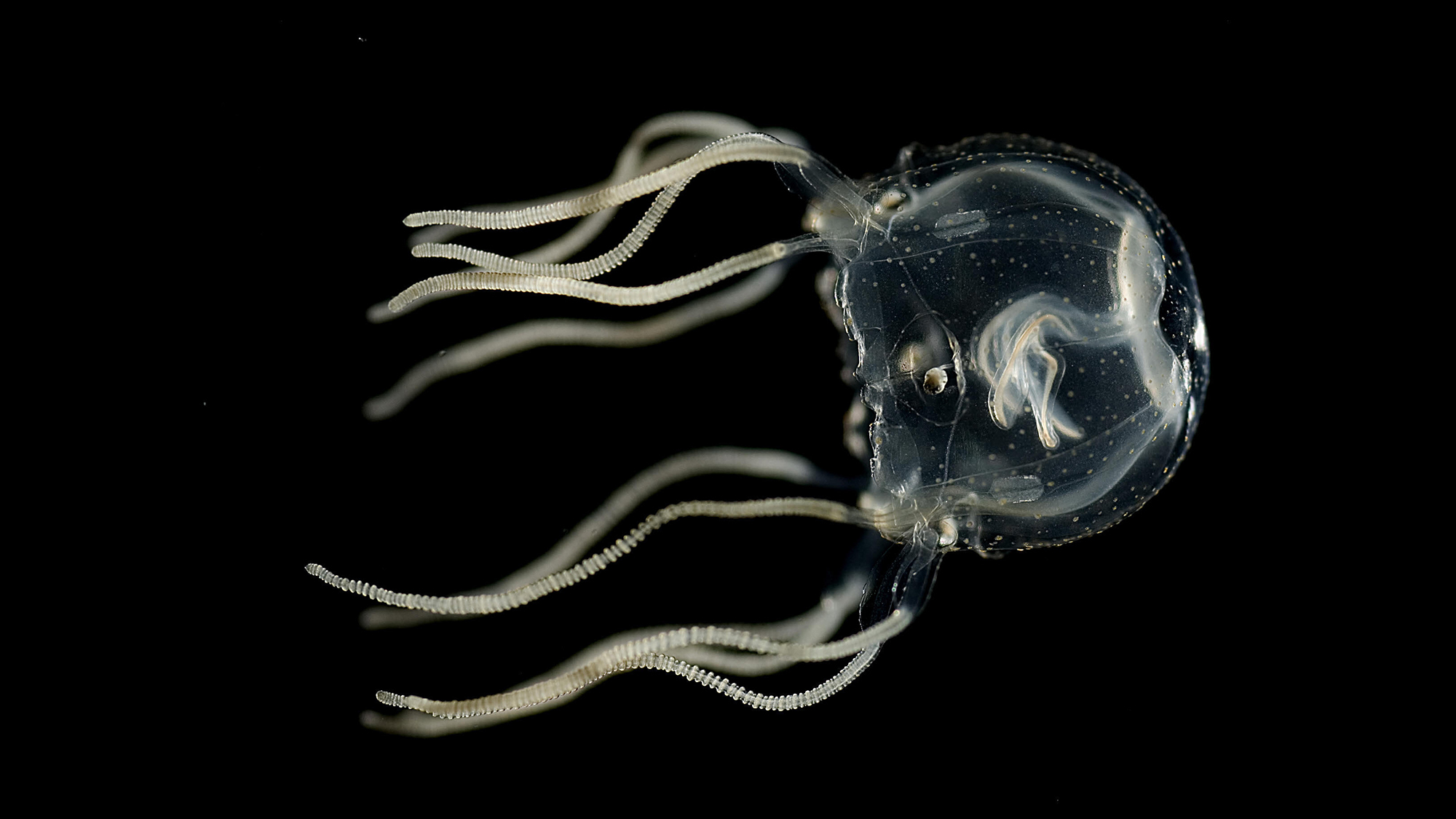

Jellyfish are an undeniable evolutionary success story, surviving at least 500 million years in Earth’s oceans. They are even poised to handle climate change very well in some areas of the world, all without a centralized brain like most animals. Despite this lack of a central brain, trained Caribbean box jellyfish can potentially remember their past experiences the way that flies, mice, and humans do, and learn to spot and dodge previously encountered obstacles in a tank. The findings are reported in a study published on September 22 in the journal Current Biology.
[Related: Jellyfish may have been roaming the seas for at least 500 million years.]
This species of jellyfish is ubiquitous in the waters of the Caribbean Sea and the central Indo-Pacific Ocean, but are generally just about a half inch in diameter. Box jellyfish like these are members of a class of jellyfish that are known for being among the most poisonous animals in the world and their stings can cause paralysis and even death in extreme cases.
To keep up their stinging and navigate their watery world, jellyfish don’t have a centralized brain like most members of the animal kingdom. They have four parallel brain-like structures with roughly 1,000 nerve cells in each. By comparison, a human brain has approximately 100 billion nerve cells. Caribbean box jellyfish are equipped with a complex visual system of 24 eyes embedded into their bell-shaped body. They use this unique vision to steer through the murky waters of mangrove swamps, looking for prey and diving under underwater tree roots.
“It was once presumed that jellyfish can only manage the simplest forms of learning, including habituation–i.e., the ability to get used to a certain stimulation, such as a constant sound or constant touch,” study co-author and University of Copenhagen neurobiologist Anders Garm said in a statement. “Now, we see that jellyfish have a much more refined ability to learn, and that they can actually learn from their mistakes. And in doing so, modify their behavior.”
In this study, the team used a round tank outfitted with gray and white stripes to mimic the jellyfish’s natural habitat. The gray stripes were mimicking mangrove roots that would appear to be distant at the start of the experiment. For 7.5 minutes, the team observed the jellyfish in the tank. Initially, the jelly swam close to these seemingly far away stripes and bumped into them frequently. However, by the end of the experiment, the jelly increased its average distance to the wall by roughly 50 percent, quadrupled the number of successful pivots to avoid collision with the fake tree, and cut its contact with the wall by half.
The findings suggest that jellyfish can learn from experience and could acquire the ability to avoid obstacles through a process called associative learning. In this process, organisms form mental connections between sensory stimulations and behaviors.
“Learning is the pinnacle [of] performance for nervous systems,” Jan Bielecki, a co-author of the study and a neuroscientist at Kiel University in Germany, said in a statement.
Bielecki added that in order to teach jellyfish a new trick, “it’s best to leverage its natural behaviors, something that makes sense to the animal, so it reaches its full potential.”
[Related: Italian chefs are cooking up a solution to booming jellyfish populations.]
The team then looked into pinpointing the underlying process of jellyfish’s associative learning by isolating the animal’s visual sensory centers called rhopalia. Each rhopalia houses six eyes that control the jellyfish’s pulsing motion. This motion spikes in frequency when the jelly swerves away from an obstacle.
They showed the stationary rhopalium moving gray bars to mimic how the jelly approaches objects and the rhopalium did not respond to light gray bars, seemingly interpreting the bars as distant. The researchers then trained the rhopalium with some weak electric stimulations that mimicked the mechanical stimuli that occur when colliding with an object. Following the electric stimulation, the rhopalium started to generate obstacle-dodging signals in response to the light gray bars as they got closer.
The findings from this stage of the experiment showed that combining visual and mechanical stimuli is necessary for associative learning in jellyfish and that the rhopalium is likely serving as the animal’s learning center.
“For fundamental neuroscience, this is pretty big news. It provides a new perspective on what can be done with a simple nervous system,” said Garm. “This suggests that advanced learning may have been one of the most important evolutionary benefits of the nervous system from the very beginning.”
The team plans to do a deeper dive into the cellular interactions of jellyfish nervous systems to tease apart the process of memory formation and also hope to understand how the mechanical sensor in the jellyfish’s body works to paint a more complete picture of its associative learning.
“It’s surprising how fast these animals learn; it’s about the same pace as advanced animals are doing,” says Garm. “Even the simplest nervous system seems to be able to do advanced learning, and this might turn out to be an extremely fundamental cellular mechanism invented at the dawn of the evolution nervous system.”
